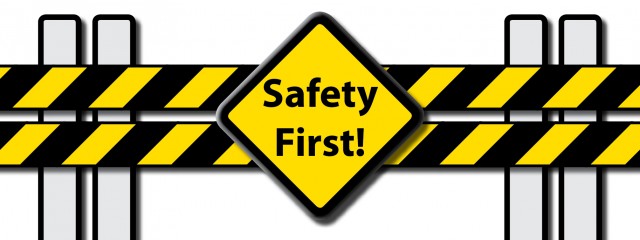Bleacher safety has become a priority over the last few years (as it should be!). These concerns affect all bleacher systems and grandstands, both new and old, portable and permanent, and if you or a family member has ever been on a bleacher it affects you as well.
Bleacher safety is not only determined by whether or not the bleacher structure is code compliant per your city or county ordinances. Many different factors are involved in determining how safe a bleacher system is: from the decking design, the safety fence as well as the foundation and support framing. Below is a short list of the most critical items to look for when visiting an event or venue that is providing seating for you or your family. This list is not a full list of safety code references or violations for an annual bleacher inspection, as that is determined by many additional factors depending on location, size and length of the event.
This short list is simply a quick check to help ensure you have a great time at an event without incident.
- Does the bleacher system have a safety fence, guardrails, or other protection to keep people from falling of the sides or back of the system? If they do not and they are more than 4 rows tall then the bleachers are non-compliant and you should take extra precautions for your safety. Anything above 30” high should have some type of fall protection to prevent accidents.
- Do the bleachers appear to be level and straight? If the bleachers are clearly sagging in areas or appear to be off-center, that can be a sign that the supporting bleacher structure has failed in a specific location or some damage has occurred in that area. It could also be that the bleachers were not leveled during installation; however, if the foundation supporting the bleachers is level, the bleachers should be as well.
- Does the bleacher have aisles to access seating or do you need to walk up and across the seat planks to get to the higher bleacher rows? All bleachers should have an aisle to get to seating. It is not easy to walk on planking and depending on your physical condition, or if it has been raining, it may not be safe either. It is very easy to slip and fall while walking up the actual bleacher rows/seats. If the bleacher does not have aisles it more than likely is not in compliance. There are exceptions to the bleacher’s having an aisle. It if is is a low rise bleacher, they may not need an aisle, but this is really uncommon.
- Does the decking of the bleacher have large gaps? This is a critical point as most accidents occur from children falling through gaps on bleachers and depending on the elevation this can be very dangerous. Code requirements in most locations require any location on a bleacher that is above 30” from grade to have gaps or openings no greater than 4 inches. This means if you were to take a softball with you and try to push it through the gaps on the system and it fits… The bleacher is non-compliant.
Again this list is by no means a complete or extensive bleacher safety list, nor is our prior bleacher safety checklist. It is simply quick reference guidelines that anyone can use when visiting a venue such as a high school or athletic sports facility. It also applies to anyone looking to rent or buy bleachers as well.
Would you buy or use a vehicle to transport your children that did not have seat belts? Then why would you use a bleacher system that does not have appropriate safety features? Most companies are required to have their existing bleachers inspected regularly to ensure their company is up to current standards and compliance. RBI recommends every bleacher owner perform ongoing maintenance and get a facility or building inspectors to perform an inspection at least once a year to ensure all bleacher systems and equipment are up to code for the safety and security of guests and protect against injuries or even death.
For more information regarding bleacher safety or safety questions please feel free to contact us. We would be happy to educate you and provide recommendations regarding these items.





